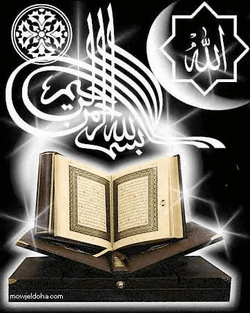The Muslim World
Geography
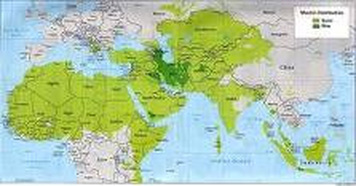
The Arabian Peninsula is mostly desert, but farming is possible through irrigation or scattered oases. Many Arab groups occupied Arabia at the time of Muhammad. Bedouins used camels to cross the scorching desert in search of seasonal pasturelands. Raids for scarce grazing land led to frequent warfare. The Bedouins would form the backbone of the armies that conquered a huge empire. The Bedouins traded with other Arabs who had settled in oasis towns. One of these was Mecca. Mecca was a bustling market town at the crossroads of main van routes. Arabs came to pray at the Kaaba, an ancient shrine that Muslims today believe was housed statues of many local gods and goddesses. The pilgrim traffic brought good profits to the local merchants. Pilgrimage formed unity and equity. Trade included a very good geographical position connecting china and Europe.
Teachings of Islam
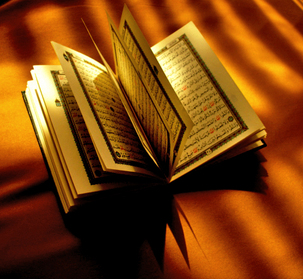
Islam, like Judaism, is monotheistic, based on the belief in one God. The sacred text, the quran, teaches that god is all-powerful and compassionate. It also states that people are responsible for their own actions. According to the Quran, each individual will stand before God on the Day of Judgment to face either eternal punishment in hell or eternal happiness in heaven.
Five pillars of Islam (Muslims must accept five basic duties)
A Way of Life
The teaching of Islam helped in shaping the lives of Muslims around the world. Islamic laws governed many aspects of daily life, and Islamic traditions determined ethical behavior and influenced family relations. Sharia was an immense body of law interpreting the Quran and applying its teachings to daily life. It regulated moral conduct, family life, business practices, government, and other aspects of a Muslim a communities. The sharia helped unite many people who converted to Islam.
Five pillars of Islam (Muslims must accept five basic duties)
- Declaration of faith
- Daily prayer
- Giving charity to the poor
- Fasting
- Hajj
A Way of Life
The teaching of Islam helped in shaping the lives of Muslims around the world. Islamic laws governed many aspects of daily life, and Islamic traditions determined ethical behavior and influenced family relations. Sharia was an immense body of law interpreting the Quran and applying its teachings to daily life. It regulated moral conduct, family life, business practices, government, and other aspects of a Muslim a communities. The sharia helped unite many people who converted to Islam.
The Spread of Islam
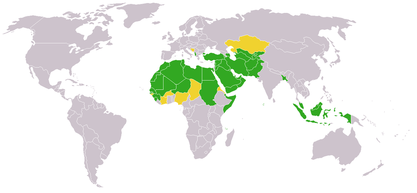
The loyalty of some Arab tribal leaders had been dependent on Muhammad’s personal commands. They refused to follow the first caliph and withdrew their loyalty to Islam. The first caliph succeeded in reuniting the Arabs, based on their allegiance to Islam. Once they were reunited, the Arabs set out on a remarkable series of military conquest. They conquered parts of the Byzantine Empire, including the province of Syria and Palestine, with the cities of Damascus and Jerusalem. They also demolished the Persian Empire. The Arabs then went into Egypt. The Byzantine Empire weakened as well as the Persian Empire. These long time rivals had fought each other to exhaustion. People in the Fertile Crescent welcomed the Arabs as liberators from harsh Byzantine or Persian rule. The common faith Muhammad gave his people was the key reason for Arabs success. The advancing Arabs brought many people under their rule. Muslim leaders imposed a special tax on non- Muslims, but allowed Christians, Jews, and Zoroastrians to practice their own faiths and follow their own laws. In time many non- Muslims converted to Islam. Spain flourished as a center of Muslim civilizations. Muslim rulers in Spain presided over brilliant court, where art and learning thrived. Muslim civilizations also thrived in Sicily and other Mediterranean islands seized by Arabs forces. Muslim officials governed the Islam well, and merchants and farmers helped the economy prosper.
Movement within Islam
Division arose within Islam. The split between Sunni and Shiite Muslims has an impact on later Islamic history.
Movement within Islam
Division arose within Islam. The split between Sunni and Shiite Muslims has an impact on later Islamic history.
Society and Economy
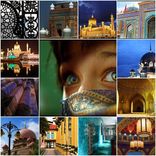
Muslim rulers united people from diverse cultures, including Arabs, Persians, Egyptians and other Africans, and European. After, Mongols, Turks, Indians, and people in Southeast Asia declared their faith in Islam. Muslim civilizations adsorbed and blended many traditions. With social mobility people were allowed to move up in social classes. People could improve their social rank through religious, scholarly, or military achievements.
Advancements
· Merchants built a vast trading network across the Muslim world and beyond.
· Everywhere Muslim traders bought and exchanged goods, creating great fortunes for the most successful.
· Trade spread products and technologies
· Extensive trade and a prosperous money economy led Muslims to create new business practices.
· Religion shaped the art and literature of the Islamic world (the Quran)
A World of Learning
Muhammad’s respect for learning inspired Muslims to make great advances in learning. Elementary practices provided boys and girls training with emphasis on reading and writing.
Effects of Muslim Rules
Muslim rule brought change to Indian government and society. Sultan introduced Muslim traditions of government. Many Turks, Persians, and Arabs migrated to India to serve as soldiers or officials. Trade between India and the Muslim world increased.
Advancements
· Merchants built a vast trading network across the Muslim world and beyond.
· Everywhere Muslim traders bought and exchanged goods, creating great fortunes for the most successful.
· Trade spread products and technologies
· Extensive trade and a prosperous money economy led Muslims to create new business practices.
· Religion shaped the art and literature of the Islamic world (the Quran)
A World of Learning
Muhammad’s respect for learning inspired Muslims to make great advances in learning. Elementary practices provided boys and girls training with emphasis on reading and writing.
Effects of Muslim Rules
Muslim rule brought change to Indian government and society. Sultan introduced Muslim traditions of government. Many Turks, Persians, and Arabs migrated to India to serve as soldiers or officials. Trade between India and the Muslim world increased.
